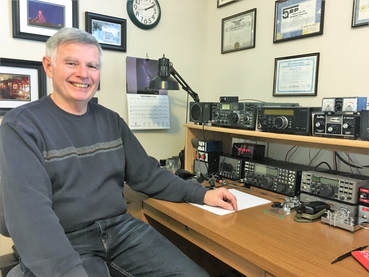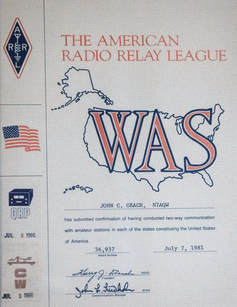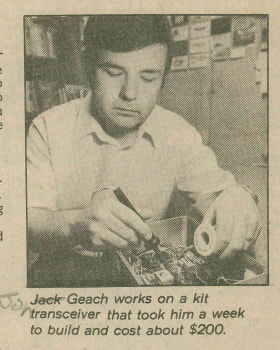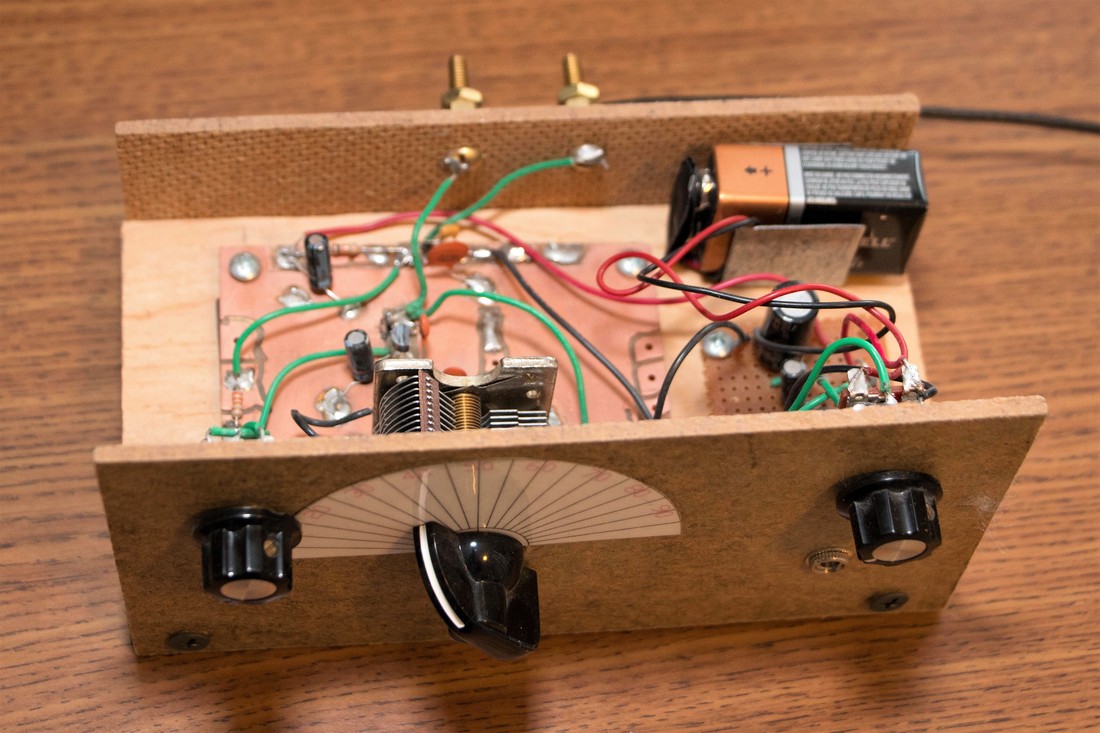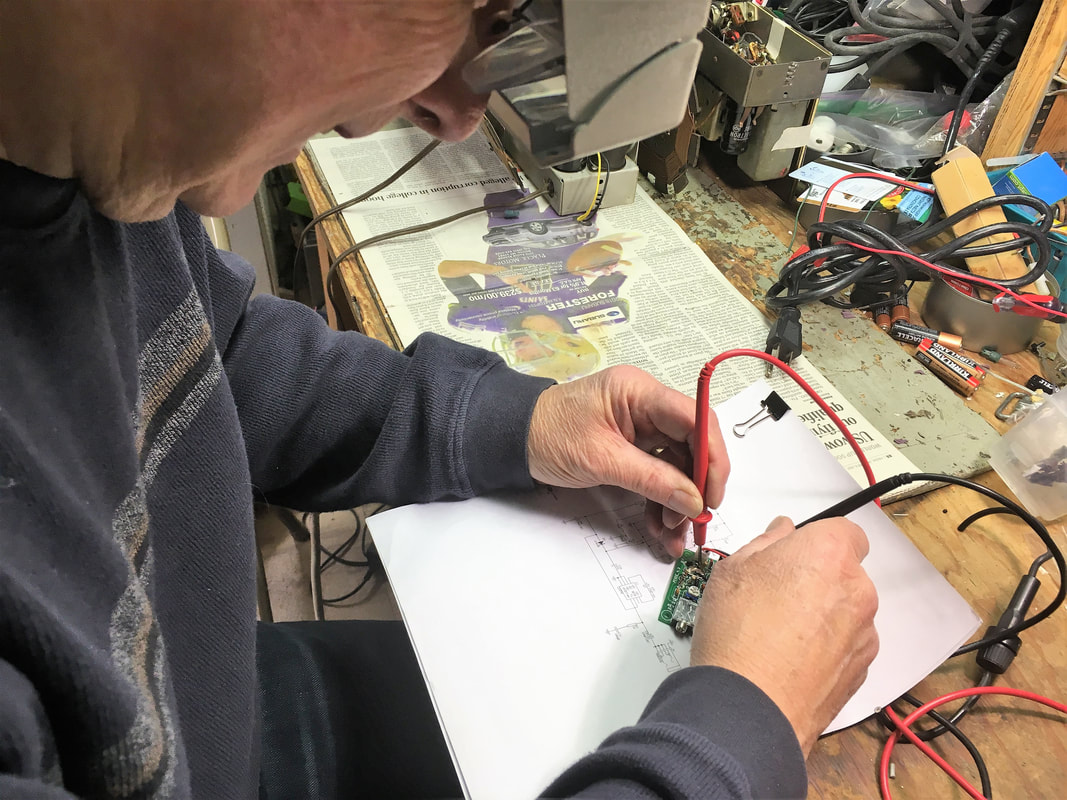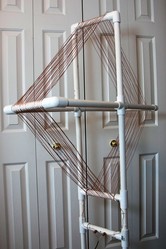John geach KS7R Want to learn how to turn your gutters and downspouts into a tuned circuit? That’s how John KS7R made an antenna for the 30 and 40 meter frequencies. But then John always liked to tinker. As a boy he took apart his motorized toys and experimented with using those motors some other way. He responded to an ad in Boy’s Life for a shortwave radio, spending his hard-earned $69.95 for a Hallicrafters S-120 receiver. Those 1963 dollars would equal about $556 today! Later he received a CW transmitter kit for Christmas. The transmitter had a maximum output of 90 watts, but the Novice limit back then was only 75 watts. When he got the kit put together, it didn’t work, and he had to take it to a repair shop.
The first ham John met was a Roy, Utah, high school friend named La Marr. La Marr W7RZ (still on the air) was his Elmer and helped him start studying for the Novice exam and learning 5 wpm CW from a LP record set. When La Marr left for the Air Force, John found it difficult to study on his own. He never lost interest in becoming a ham and twelve years later passed his Novice exam in Glendive, MT, after taking a class from a local ham. He likes to tell people it only took him twelve years to learn the Morse code! The Welcome Wagon greeted John when he moved to Helena in 1977; and when he asked if there was a ham radio club, they referred him to CCARC. He was the youngest person in the room when he walked into a club meeting at the public library. Presiding over the meeting was the late Dick Beaton in a three-piece suit, with about 8 other guys. John asked if there were any classes to help with studying for the General exam; they said there were not. Subsequently John studied on his own and passed the General in 1978 and then the Extra in 1982. He feels so strongly that classes are a major factor in growing the ham radio community that he has taken responsibility for training ever since. For John the endlessly fascinating thing about amateur radio is that there is always something new. Currently he is experimenting with FT-8 and Echo Link. He is working up his proficiency with Echo Link so that he can demonstrate it for the upcoming Technician class he will co-teach. His favorite bandwidth is 15 meters because of the DX possibilities. Although 15 meters is more productive when sunspot activity is high, he says he sometimes picks up contacts anyway. John says that the sunspot activity declines more slowly until it bottoms out. Then it will accelerate more rapidly and the wait for more contacts may not be as long as one thinks. John has built some of the radio equipment he has, including an Elecraft K-2 with 100 watt amplifier and auto antenna tuner, an Elecraft K-3, and a P3 Panadapter. He also built a regenerative shortwave receiver and his station clock. He uses Icom 707 and 745 transceivers and a Dentron Jr. manual antenna tuner. For digital modes he uses the Icom 707, since it has a wide bandwidth receiver; and his 2 meter Icom 228H works well for the ARES net. Just for fun John collects and restores antique AM table model radios. John also built his antennas: a copper J-pole for VHF; a triband fan dipole for 10, 15, and 20 meters; and his tuned downspout and rain gutter antenna for 30 and 40 meters. Except for that last one, all of John’s antennas, including those for TV and FM radio, are in his attic. The achievement John is proudest of is his QRP CW-Worked All States Award. He has served CCARC as president, two years; newsletter editor, about five years; and now treasurer for ten years. Quietly, reliably, John is always there for the club and for anyone who wants to know more about amateur radio. January 2018 |
- Home
- Dick Beaton N7RB / SK
- Al WA1TYB
- Allen KH7AL
- Barb AE7AQ
- Bedford K7ZZX
- Bill K7MT
- Bill N7MSI
- Bill NC7MT/SK
- Bob K7HLN
- Brian KJ7OUF
- Bruce KJ7VJD
- Chris KC7VCY
- Chris KD7URE
- Cody AI7CA
- Darrell K7IUI
- Dave W7MIT
- Daysee KI7CNG
- DeLona KI7YMZ
- Don W7MRI
- Doug KE7GYY
- Dwayne K7SYO
- Ed W7MAD / SK
- Eric KE7NLU
- Fred N7MNY
- Janet W7JES
- Jay KG7SYX
- Jeff N7JFF
- Joel WA2UFU
- John AJ7MT
- John KS7R
- Julie KG7LZZ
- Kathe N1NYT
- Ken AF7QP
- Lynn K7WGR
- Matthew K7EVB
- Michelle KD7DVM & Tom KD5BZZ
- Michelle KF7DYZ
- Miguel W7MCL
- Oakley KE7WWL
- Ray K7ZIN
- Rich N7GC
- Rob AE7AP
- Sean KJ7MXJ
- Shanna KI7YLI
- Steve K7SFC
- Steve KE7GO
- Steve KK7BJF
- Tim KB7DMK
- Tom KE7VUX
- Zhaun AI7AB
- Marla KM7LIB
